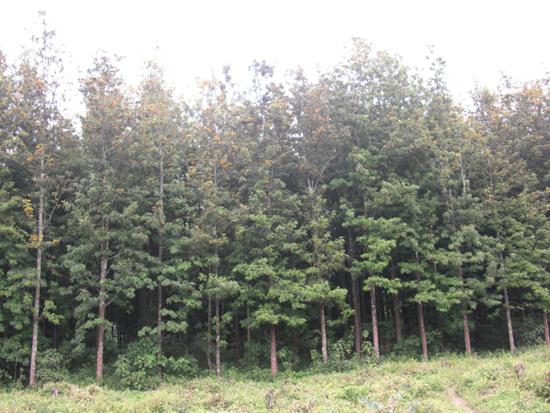Busha Teshome Tolera
Other projects
13 Feb 2019
Smallholder Farmers’ Perception in the Forest-Farm Interface Landscape Management for Biodiversity Conservation and Wood Product Supply in Jimma Zone, Ethiopia
2 Nov 2023
Community Based Forest Development for Wood Product Supply and Natural Forest Conservation in Jimma Zone, Ethiopia
In Ethiopia, increased urbanization and the expansion of the construction sector led to increased use of timber and other wood products. The Government of Ethiopia has given due attention to the forest sector development and, thereby, improves the trade balance of forest products. Recently the integration of actors within the cluster is recognized to improve economic contributions and forest resource. However, the existing information as to the forest and wood product industries for forest resource development is fragmented, urging for a comprehensive analysis of the sector. Based on this, the study is planned to analyse the interdependence of forest and wood product sector in an economy, the innovation along the value chain of wood product and efficiency analysis of wood product industries at firm level to maximize the utilization of limited forest resource and to protect the endangered species and scenario development.

Gravila planatation in Jima.
Forests are an integral part of national economies, providing a wide range of environmental goods, food, fuel, medicines, household equipment, building material and raw materials for industrial processing. The increase in timber consumption has contributed to increase in import of wood products in Ethiopia. To reduce the gap government has begun taking some measures through rehabilitation of natural forests and promoting plantation programs. Hence, the forest sector has been getting strategic attention in the GTP II for the economic contribution and climate resilience.
The forest conservation and utilization measures lack to integrate with other sectoral activities. The integration of actors within the cluster is recognized to improve forest resource. However, the existing information as to the forest and wood product industries and forest resource development is fragmented, urging for a comprehensive analysis of the sector. This research is intended to investigate the cluster linkages and innovations along the value chain of wood product industries for sustainable forest management in Ethiopia. To achieve the stated objective the study will use both primary and secondary sources of data. Various data collection tools will be used to obtain the required qualitative information and quantitative data. Research results will contribute to understand the socio economic aspect forestry sector to support policy makers for the conservation and management of forest in Ethiopia.